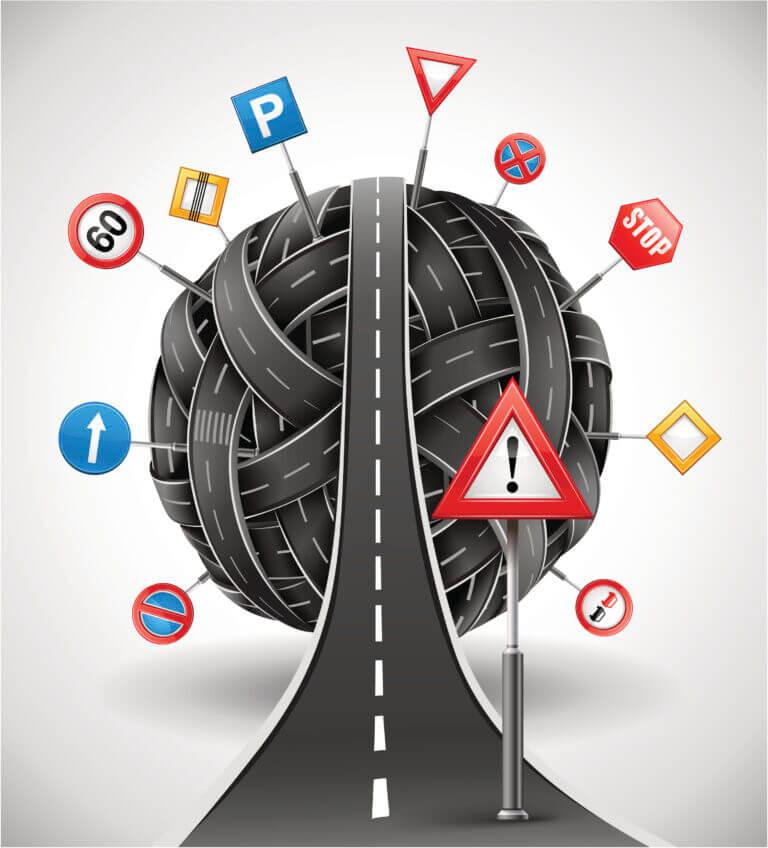The threat of carjacking in South Africa isn’t evenly distributed. While it can occur anywhere, certain areas and situations unfortunately present a higher risk than others. Understanding these hijacking hotspots can empower individuals to make informed decisions, take extra precautions, and mitigate their risk of becoming a victim.
What factors contribute to an area becoming a hijacking hotspot?
1. Limited Visibility and Poor Lighting: Dark, secluded areas with poor lighting offer criminals the advantage of operating under the cover of night. This makes it easier for them to remain unseen and carry out their attacks without attracting attention.
2. Scarce Security Presence: Areas with limited security patrols or monitoring systems are often seen as easier targets by criminals. The lack of a visible security presence emboldens them and increases the chances of their actions going unnoticed.
3. High Traffic Volume: Busy intersections, traffic jams, and congested roads can create windows of opportunity for criminals. These situations often involve reduced visibility due to surrounding vehicles and distracted drivers, providing the perfect cover for a quick strike.
4. Isolated Locations: Deserted parking lots, secluded roads, and poorly lit alleyways are prime examples of isolated locations that attract hijackers. The lack of bystanders and potential witnesses allows them to operate with greater freedom and reduces the likelihood of immediate intervention.
How can you stay informed about hijacking hotspots?
1. Consult Local News and Crime Statistics: Staying up to date on prevalent crimes in your area is crucial. Local news outlets often report on incidents, highlighting areas experiencing a surge in hijacking activity. Additionally, police websites and crime statistics databases can provide valuable insights into specific hotspots.
2. Engage with Community Watch Groups: Connecting with local community watch groups is an excellent way to gain valuable knowledge about recent crime trends and vulnerable areas in your neighbourhood. These groups often share information and collaborate with authorities to enhance community safety.
3. Utilize Navigation Apps with Real-Time Traffic Updates: By staying aware of traffic congestion through navigation apps with real-time updates, you can potentially avoid getting caught in situations that might make you more susceptible to hijackings. Opting for alternative routes or avoiding heavily congested areas can significantly reduce your risk.
4. Network with Neighbors and Residents: Building relationships with neighbours and fellow residents can be incredibly beneficial. Sharing information about suspicious activity, keeping an eye on each other’s homes, and collectively reporting any concerns to authorities can create a stronger sense of community and deter potential crimes.
By understanding the geographical dynamics of hijackings, individuals can make informed decisions about their routes, parking locations, and overall level of vigilance in specific areas. This knowledge, combined with proactive measures like avoiding isolated locations, parking in well-lit areas, and staying informed, empowers South Africans to collectively combat the evolving landscape of hijackings and safeguard themselves and their vehicles. Remember, awareness and informed decision-making are key tools in navigating the landscape of crime and staying safe.
Empowering Yourself in Hijacking Hotspots: Additional Safety Tips
While identifying hijacking hotspots is crucial, simply knowing the high-risk areas isn’t enough. Here are some additional safety tips to empower yourself when navigating these zones:
1. Plan Your Route Carefully: Before venturing into known hijacking hotspots, plan your route meticulously. Utilize navigation apps to identify alternative routes with good lighting and avoid isolated stretches, especially during night hours.
2. Travel with a Companion if Possible: Whenever feasible, travel with a companion, especially at night or through areas with a reputation for hijackings. Having another person present can deter criminals and provide a sense of security.
3. Be Extra Vigilant in High-Risk Areas: When entering known hotspots, heighten your situational awareness. Pay close attention to your surroundings, avoid distractions like using your phone while driving, and maintain a safe distance from other vehicles, especially in congested areas.
4. Trust Your Gut Instinct: If a situation feels off or suspicious, don’t hesitate to trust your gut instinct. It is often your most valuable tool. Opt for alternative routes, avoid stopping in isolated locations, and don’t be afraid to drive to a well-lit, populated area or seek help from security personnel if necessary.
5. Invest in Additional Security Measures: Consider investing in additional security measures for your vehicle, such as visible car alarms, steering wheel locks, or even window tinting (adhering to local regulations). While these may not fool determined criminals entirely, they can act as deterrents and potentially buy you valuable time in case of an attempted hijacking.
6. Report Suspicious Activity Immediately: If you witness any suspicious activity in a known hijacking hotspot, don’t hesitate to report it to the authorities immediately. This could involve suspicious individuals loitering around parking lots, unusual activity near ATMs, or any instance that raises your concerns. By reporting suspicious activity, you could potentially prevent a crime and contribute to a safer environment for everyone.
Frequently Asked Questions
Q: What are some specific examples of factors that can contribute to an area becoming a hijacking hotspot?
A: Besides the mentioned factors like poor lighting, limited security, and high traffic volume, isolated locations like deserted parking lots, secluded roads, and poorly lit alleyways are also prime targets for hijackers due to the lack of potential witnesses.
Q: How can I stay updated on the latest hijacking hotspots in my area?
A: Multiple resources can be beneficial. Reviewing local news reports and crime statistics, engaging with community watch groups, and utilizing navigation apps with real-time traffic updates can all provide valuable insights into areas experiencing a surge in hijacking activity.
Q: What are some additional things I can do to stay safe when driving through a known hijacking hotspot?
A: In addition to planning your route carefully, traveling with a companion if possible, and being extra vigilant in these areas, consider trusting your gut instinct. If something feels off, don’t hesitate to avoid the situation or seek help from security personnel. Investing in additional car security measures and reporting any suspicious activity to the authorities immediately can also act as deterrents and contribute to a safer environment for everyone.
Q: What role can the community play in combating hijackings in these hotspots?
A: Building relationships with neighbours and fellow residents fosters a strong sense of community, allowing residents to share information about suspicious activity, keep an eye on each other’s homes, and collectively report any concerns to authorities. This collective effort can significantly deter potential crimes and enhance overall safety.
Remember, staying informed, exercising caution, and adopting these additional safety measures empower you to navigate even high-risk areas with greater confidence. By taking a proactive approach and prioritizing your safety, you can significantly reduce your vulnerability to hijackings and contribute to a collective effort to combat this ongoing challenge in South Africa.



